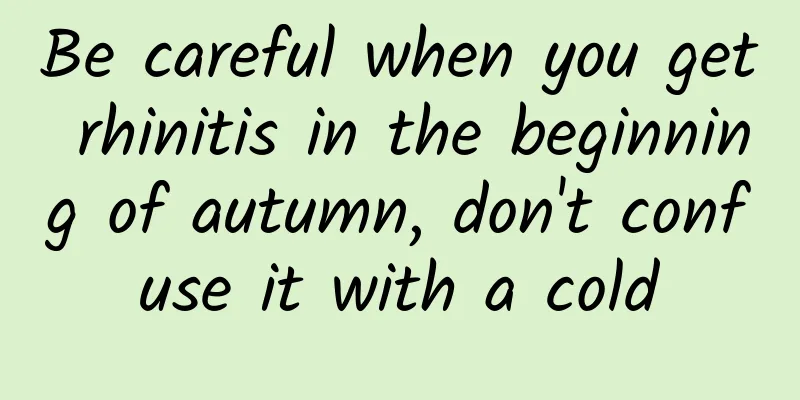Why do children have leg pain?

|
There are many reasons for children's leg pain. The most important reason is growing pains. That is to say, when the child is in a period of rapid growth and development, if the child's body calcium supplementation does not keep up with the speed of the child's growth and development, this may cause the child to experience growing pains. This is also a common type of pain phenomenon. As a parent, don’t worry too much and provide calcium supplements in time. Why do children have leg pain? Growing pains often occur in children between the ages of 5 and 10 who are growing. If a child's bones grow faster than his muscles during his growth period, the muscles will be pulled and pain will occur. This is a normal growth phenomenon and parents do not need to worry at all. This type of growing pain is easy to identify. It usually occurs in the middle of the night and may cause numbness or pain in the knees, ankles, and knee joints. The degree of pain may be mild or severe and will disappear after a few nights. The next time it occurs it will last for a few nights before disappearing. There is no redness or swelling in the legs, there is no pain when pressing the leg muscles, and it does not affect walking. When growing children have leg pain, many parents will associate it with calcium deficiency. But in fact, calcium supplementation has nothing to do with growing pains. Children with sufficient calcium may also experience growing pains, and calcium supplementation is not very helpful in relieving growing pains. There is no relationship between growing height and growing pains. Having growing pains does not necessarily mean that you will grow tall. Children without growing pains may also grow very tall. However, some leg pain may also be caused by diseases, such as juvenile arthritis, bone cancer, etc. For example: ① In case of sprain or fracture, there will be pain when pressing, and the fracture site will be red and swollen. ②Childhood leukemia may also show bone pain, but it may be accompanied by fever, anemia, pale complexion and other symptoms, and there will be pain in the bones and joints. ③Juvenile arthritis will cause redness and swelling of the joints, and the location of pain will change. What should I do if my child has growing pains? The most important thing in treating growing pains in children is to get enough rest. The most effective way to deal with pain is to give the child local massage and hot compress to help relieve the pain and give the child a sense of psychological care and security. 1. Divert attention Distracting the child's attention is an effective way to help him ignore the pain. Parents can attract their children by telling stories, playing games, playing with toys, watching cartoons, etc. Sick children should be treated more gently and caringly than usual, because the encouragement and spiritual support from parents are the most important pain relief remedies for children, and sometimes even more effective than drugs. 2. Hot compress massage Parents can use a hot towel to massage or apply hot compress to the painful area of the child. This can ease the child's tension and thus relieve the discomfort caused by the pain. When massaging, be sure to pay attention to the strength of kneading. Let the child fall asleep with gentle caressing. When the pain is severe, you can apply local massage, take painkillers, or take an appropriate amount of vitamin C. With proper rest, exercise, massage, and symptomatic drug treatment, children's growing pains will heal quickly without causing any sequelae or affecting their normal growth and development. 3. Reduce exercise Growing pains are not a disease and there is no need to restrict the child's activities. However, if the pain is severe, the child should be allowed to rest more, relax his muscles, and avoid strenuous activities. If your child has knee or calf pain after school, don't force him or her to do more exercise. Soak your child’s feet and calves in hot water every night before going to bed. However, when the child is not tired, more activities should be encouraged to exercise muscle strength and promote the natural correction of tibial deformity. 4. Nutritional supplement Children should consume more nutrients that can promote the growth of cartilage tissue, such as milk, bones, walnuts, and eggs, which all contain elastin and collagen. Vitamin C is beneficial to collagen synthesis, so children can eat more vegetables and fruits rich in vitamin C, such as green vegetables, leeks, spinach, citrus, grapefruit, etc. |
<<: What should I do if my child always has a fever at night?
>>: Can Atractylodes macrocephala be used to remove freckles?
Recommend
Transmissible gastroenteritis
In real life, meat is very nutritious and most pe...
What to do if you have a fever and keep sweating
It is normal to sweat when you have a fever. When...
What happens if measles becomes serious?
I believe that many people should know something ...
Dry and itchy skin
Many people feel skin discomfort in the spring, w...
Can Codonopsis be used to soak in water for drinking?
Everyone should know that Codonopsis pilosula is ...
The four most significant effects and functions of hawthorn tea
As we all know, health tea has many benefits to o...
What to do with tinnitus and stuffy ears? There are ways to regulate it in daily life
I don’t know if you have ever had this experience...
The difference between spots and freckles
As we all know, pigmentation is a spot that is a ...
Can I eat Chinese medicine boiled overnight?
Since Chinese medicine has a very good conditioni...
What to do if you have a cervical strain
In daily life, if you are not careful, you may su...
Is it good to have a fever and sweat?
Fever actually happens to everyone, but some frie...
What are the symptoms of pineal tumors?
With the development of modern science and technol...
The correct method of washing medicine externally
Chinese herbal external washes are medicines for ...
What to do if you have ovarian cysts? Chinese medicine recommends treatment methods
Ovarian cyst is a common gynecological disease. T...
What are the dangers of having a small ball in the testicle?
If you feel a small lump inside the testicle, it ...









